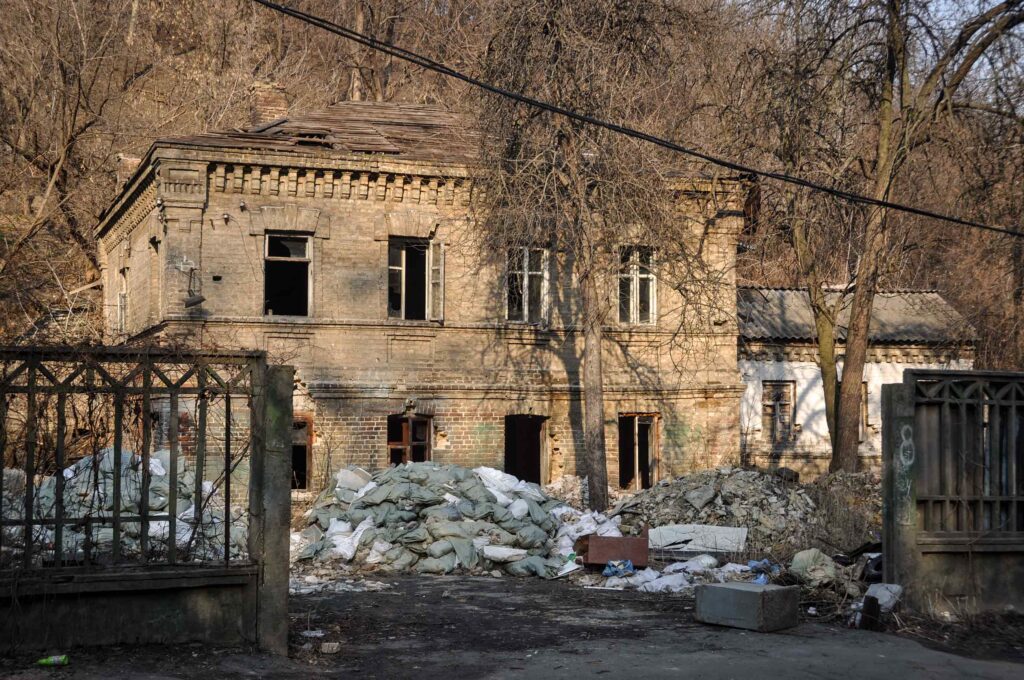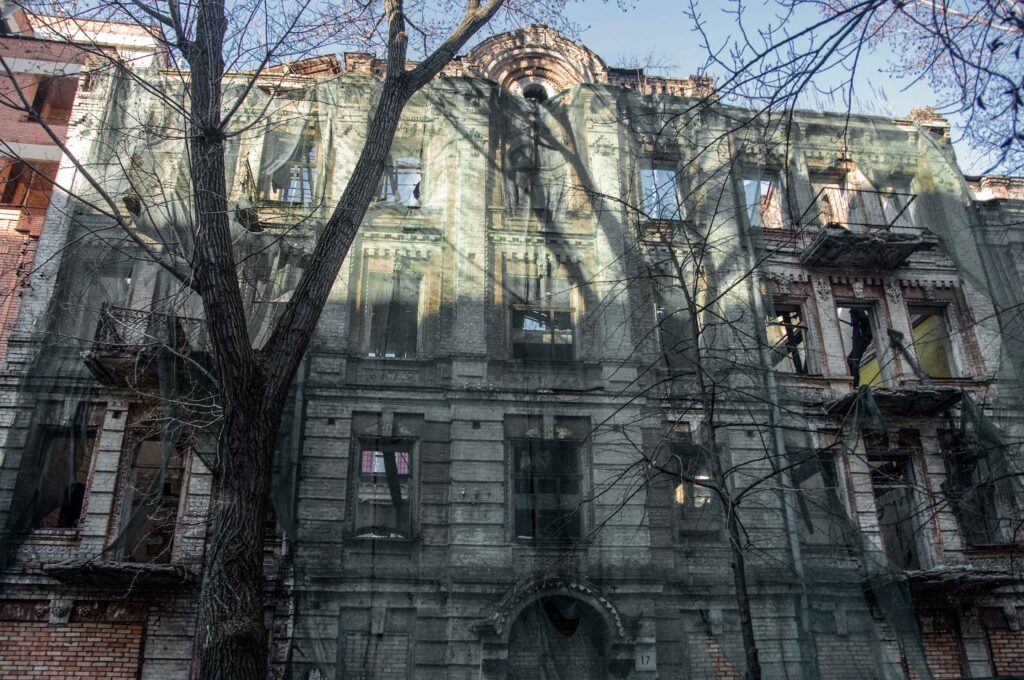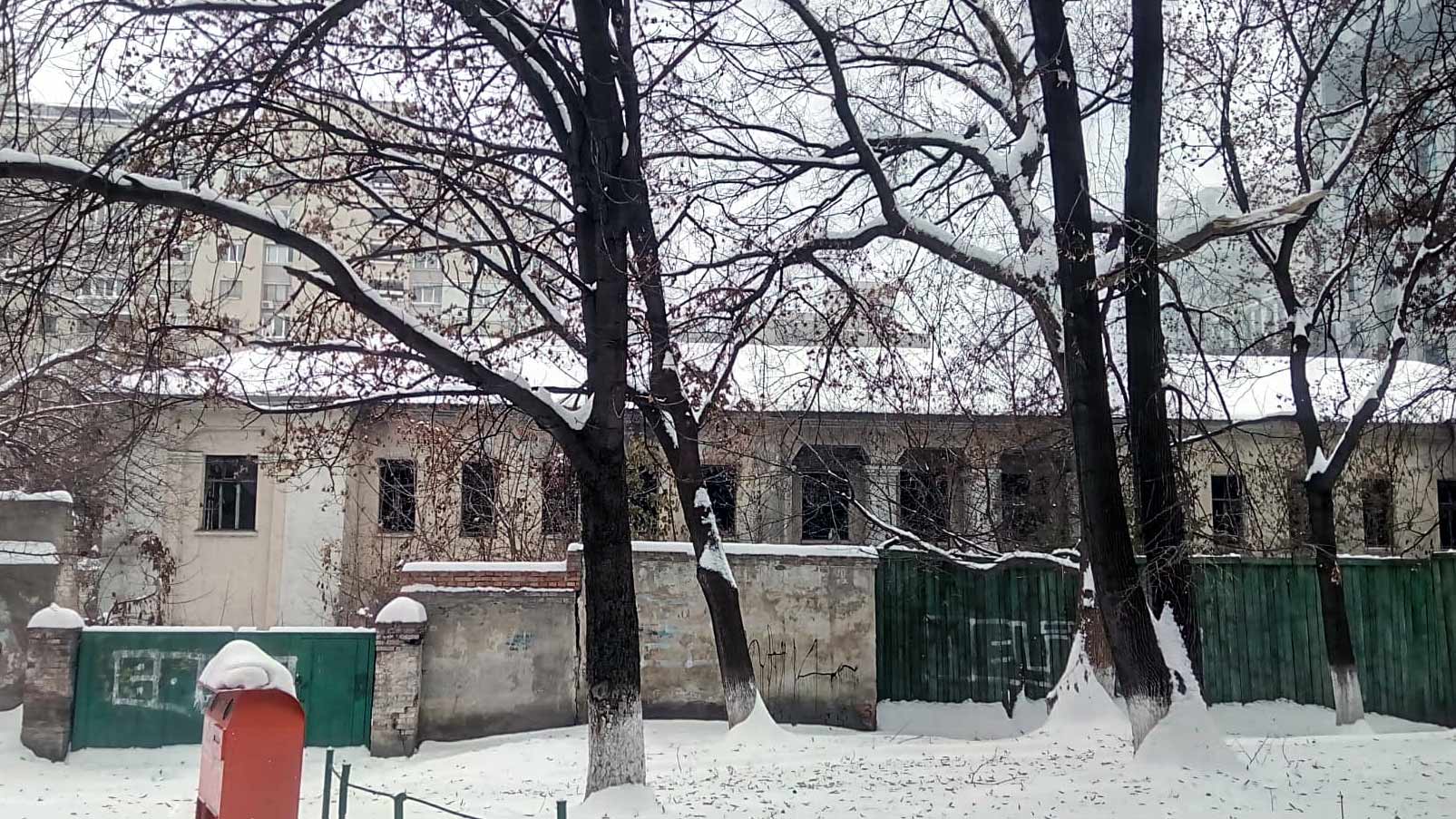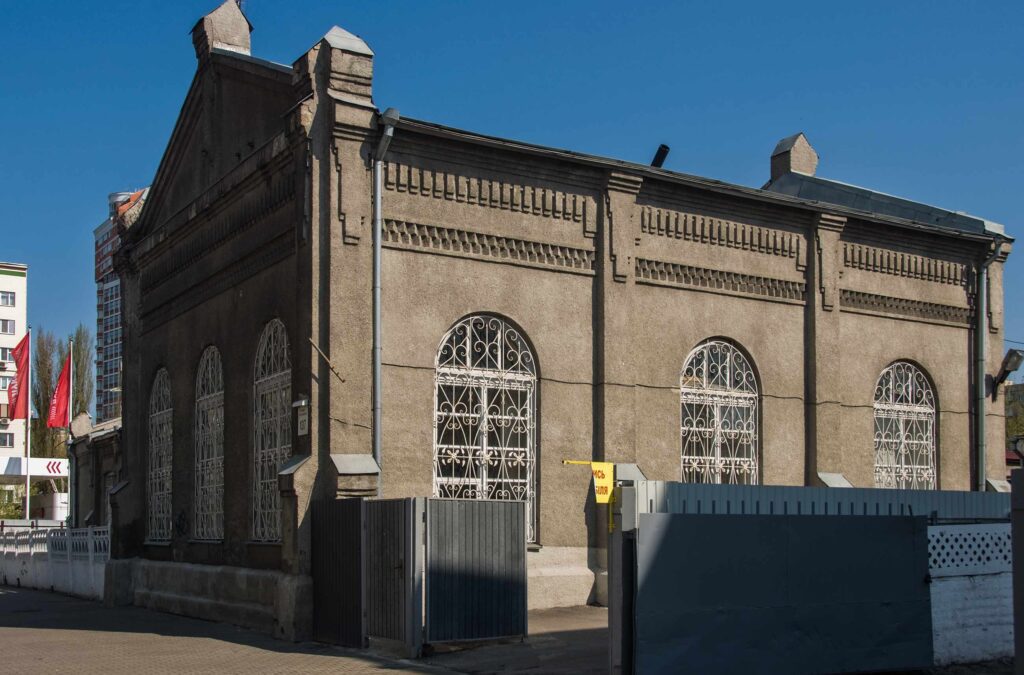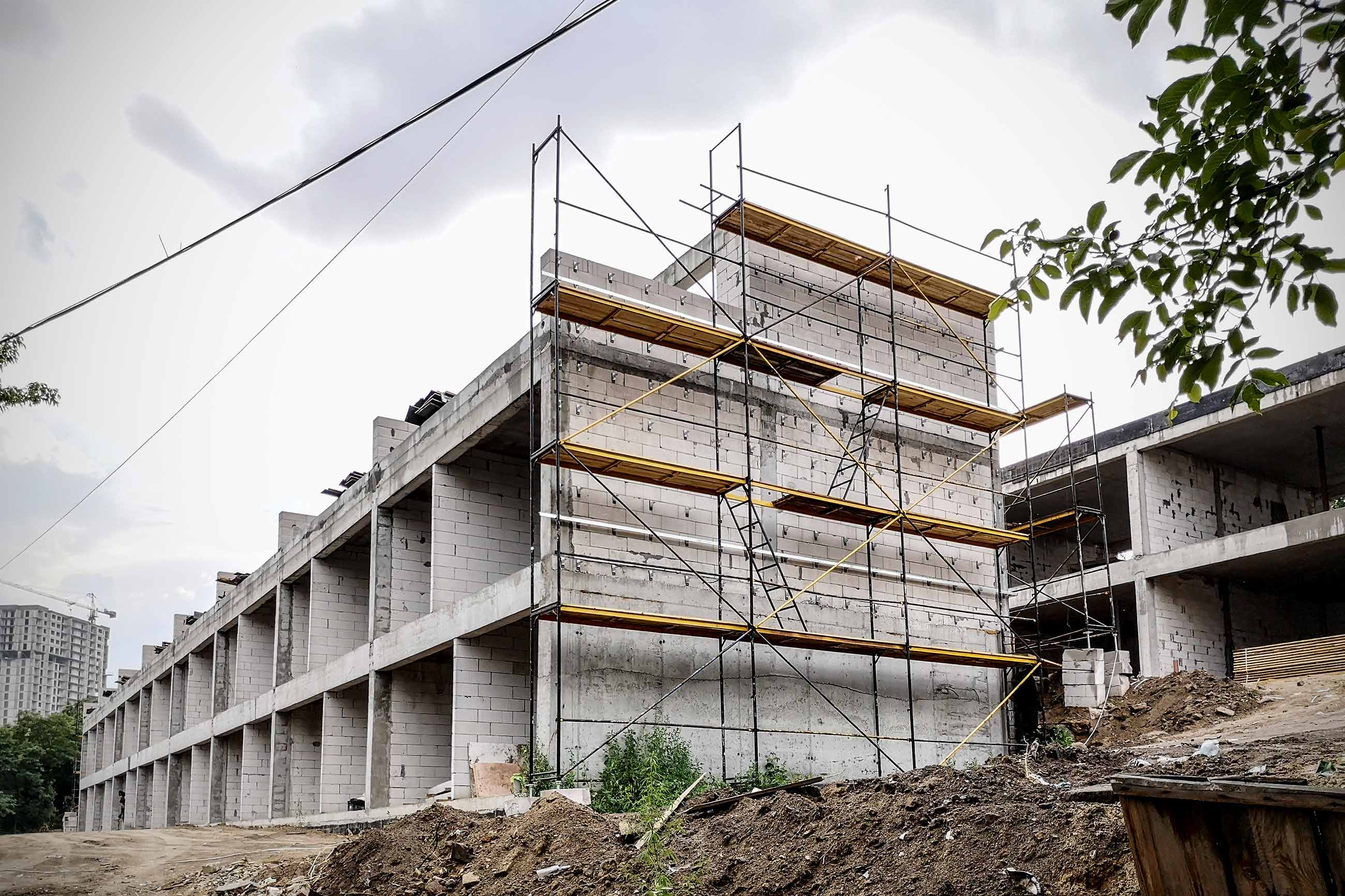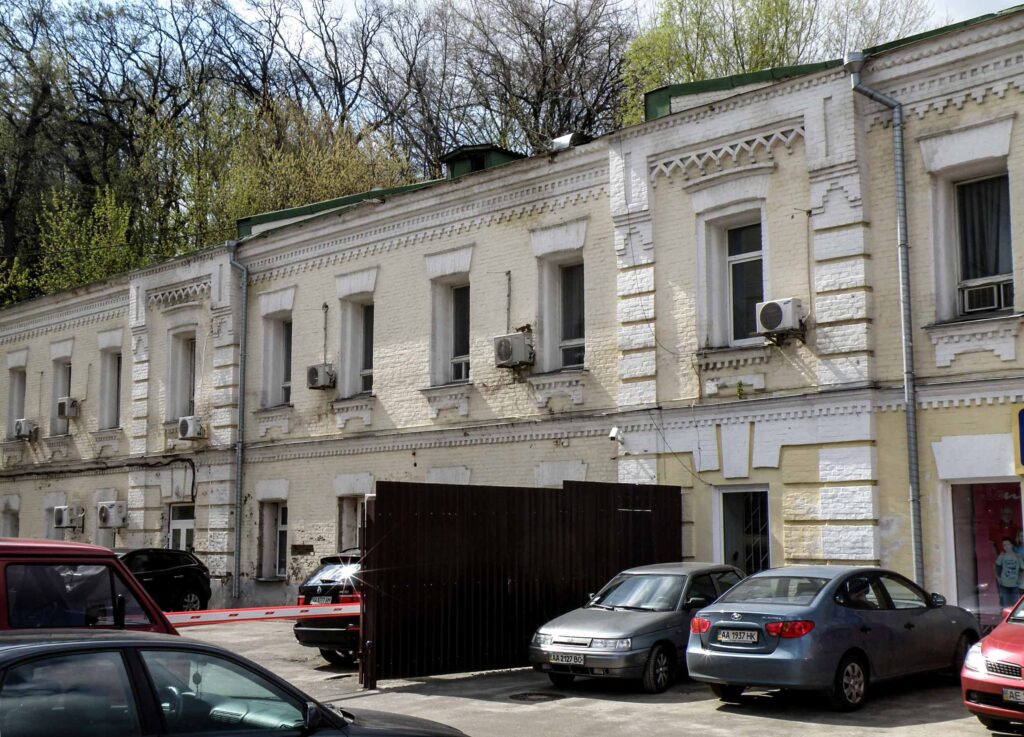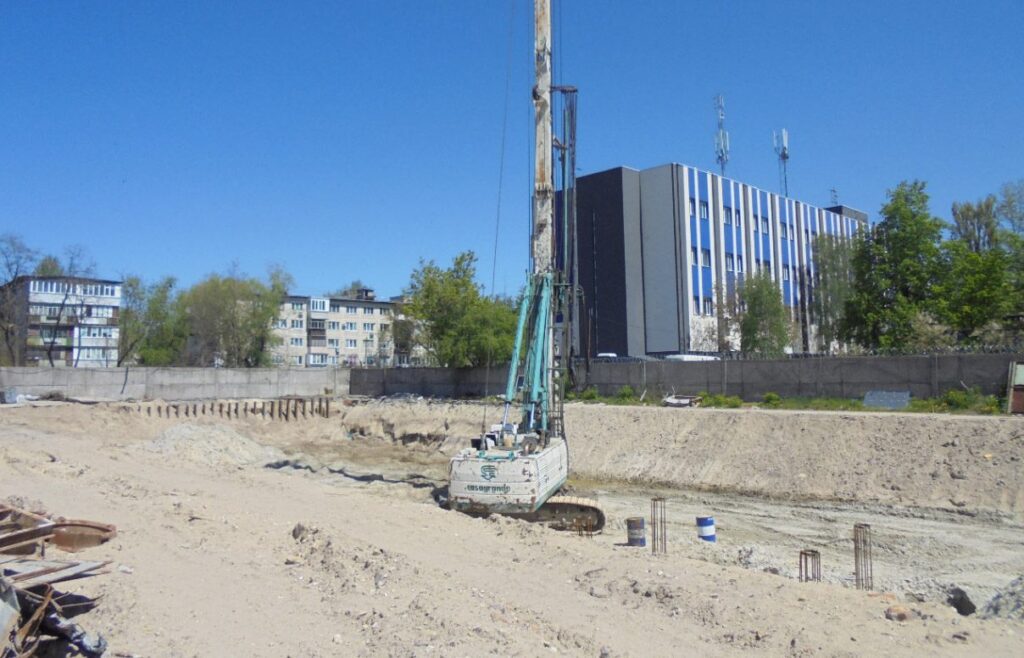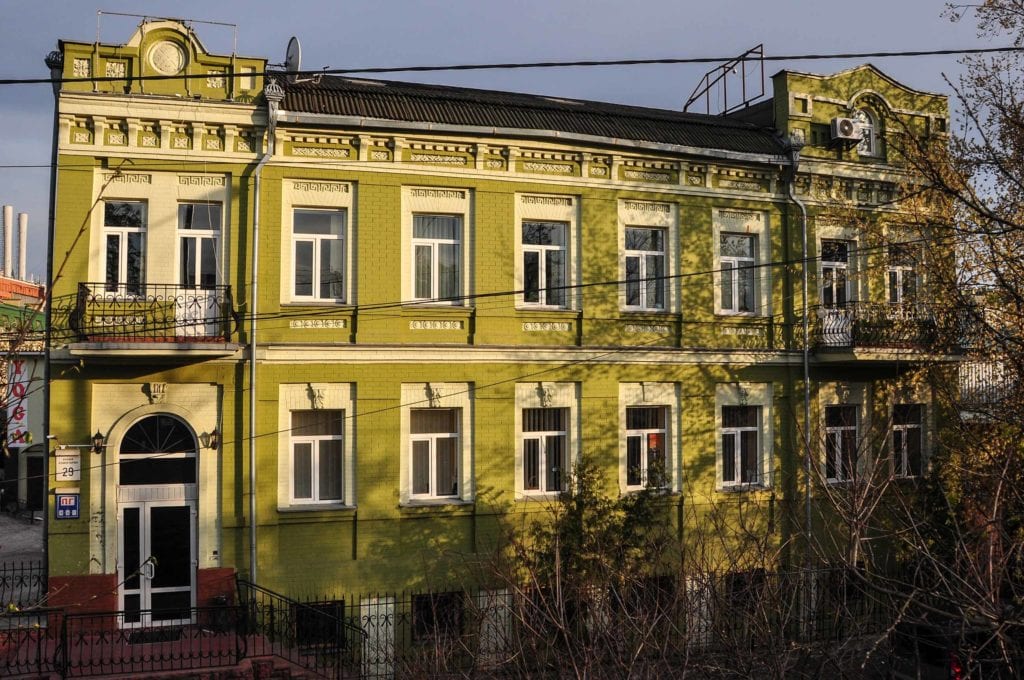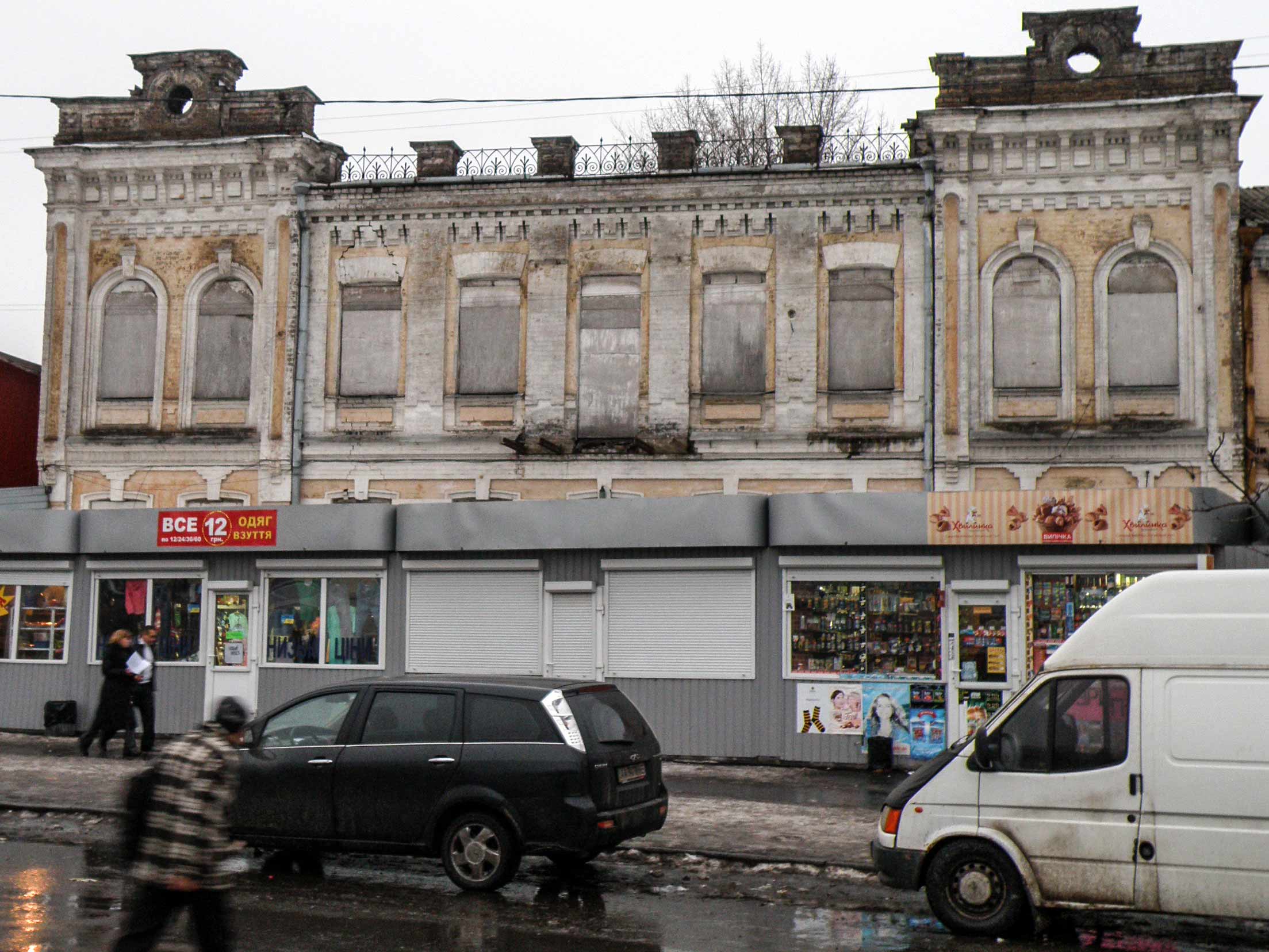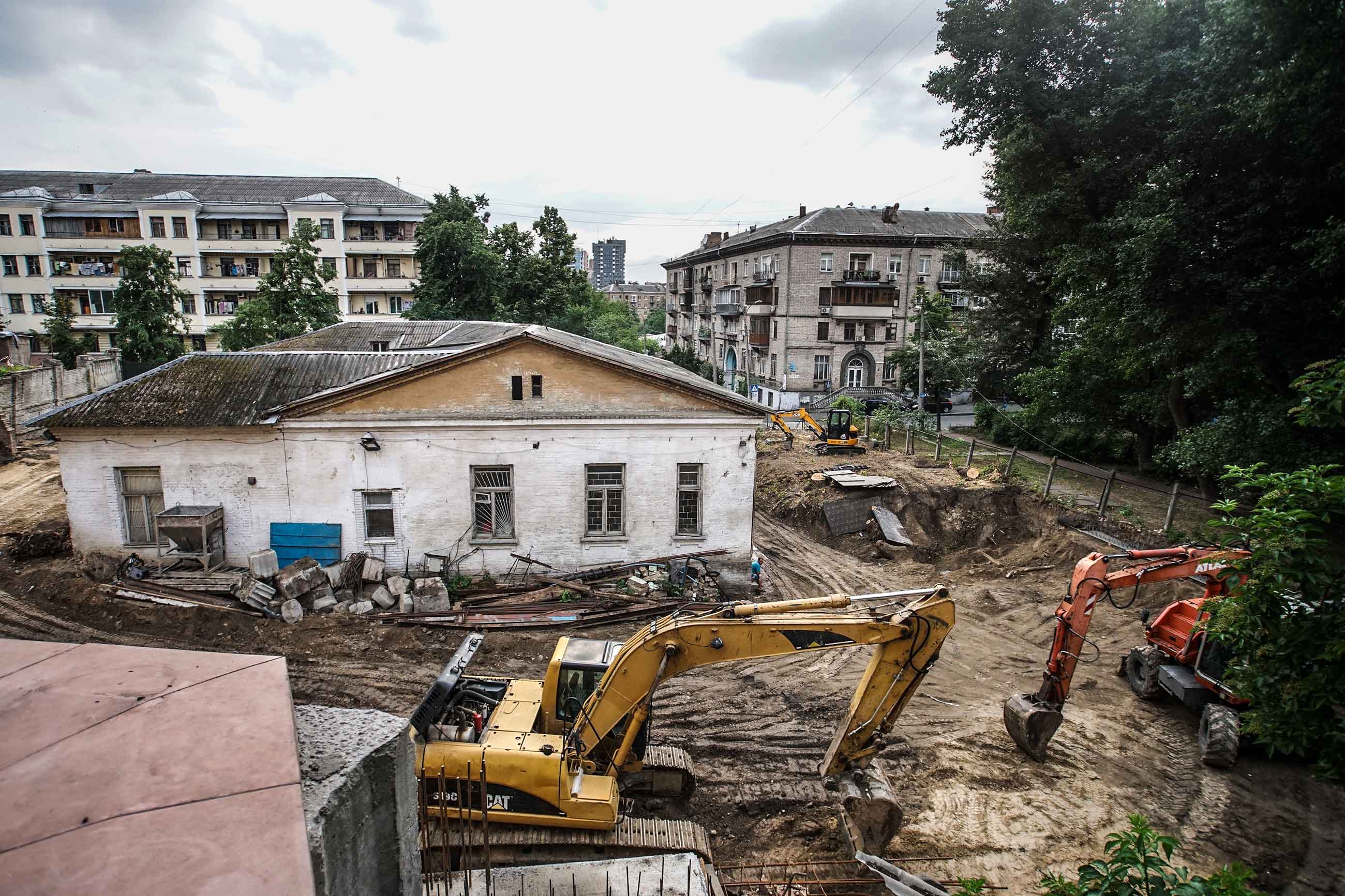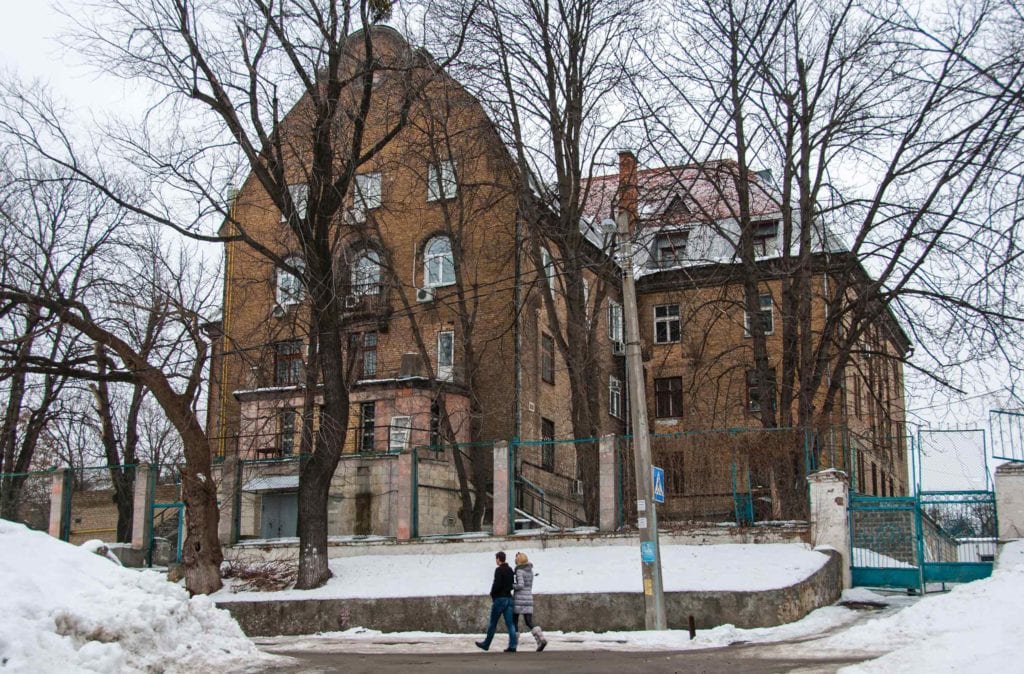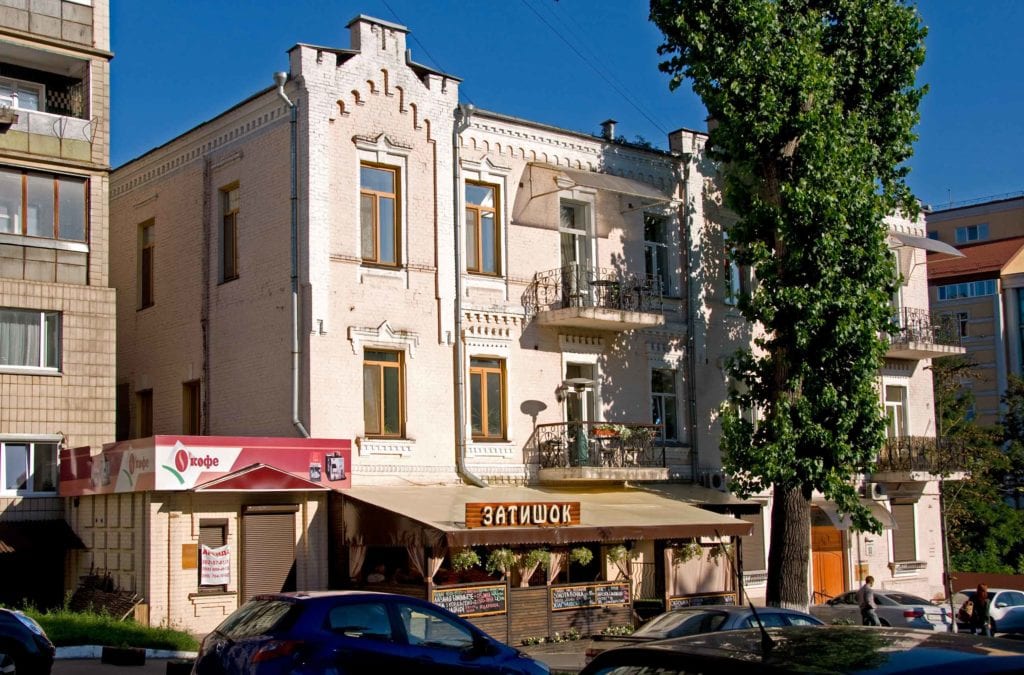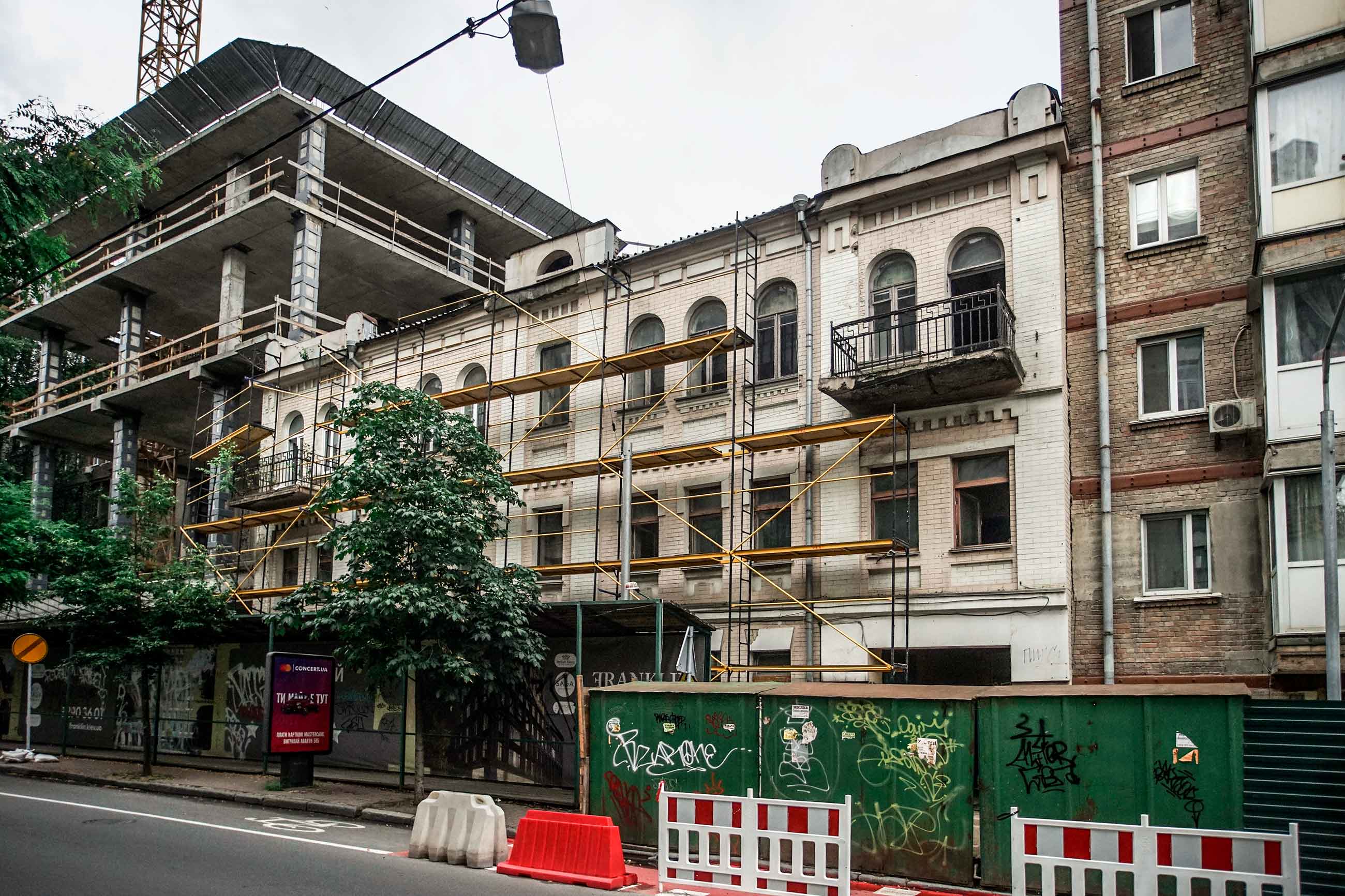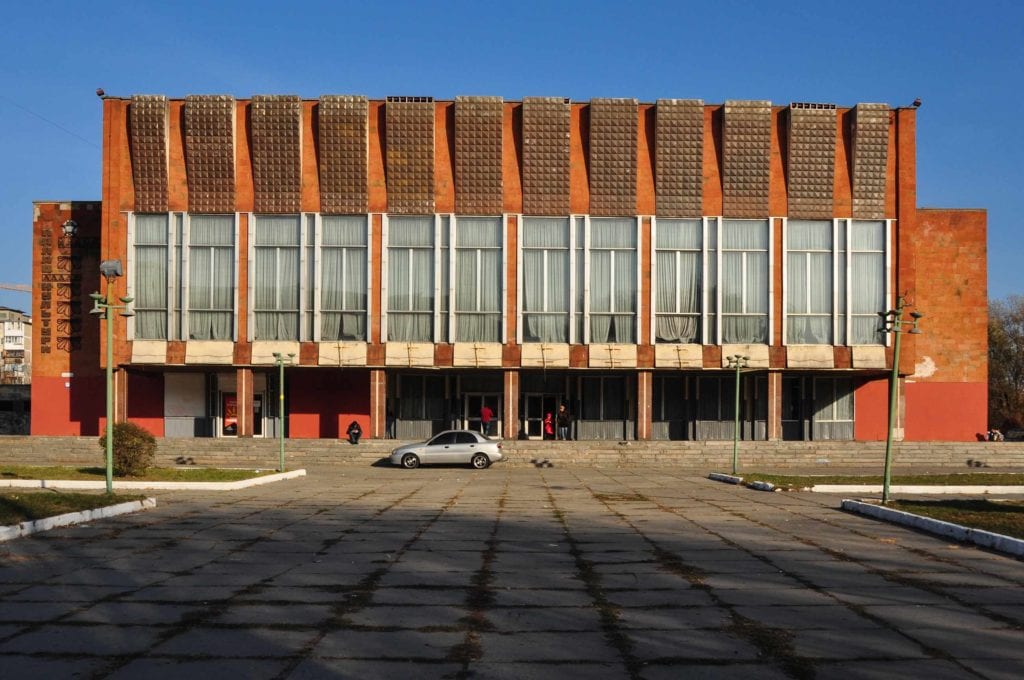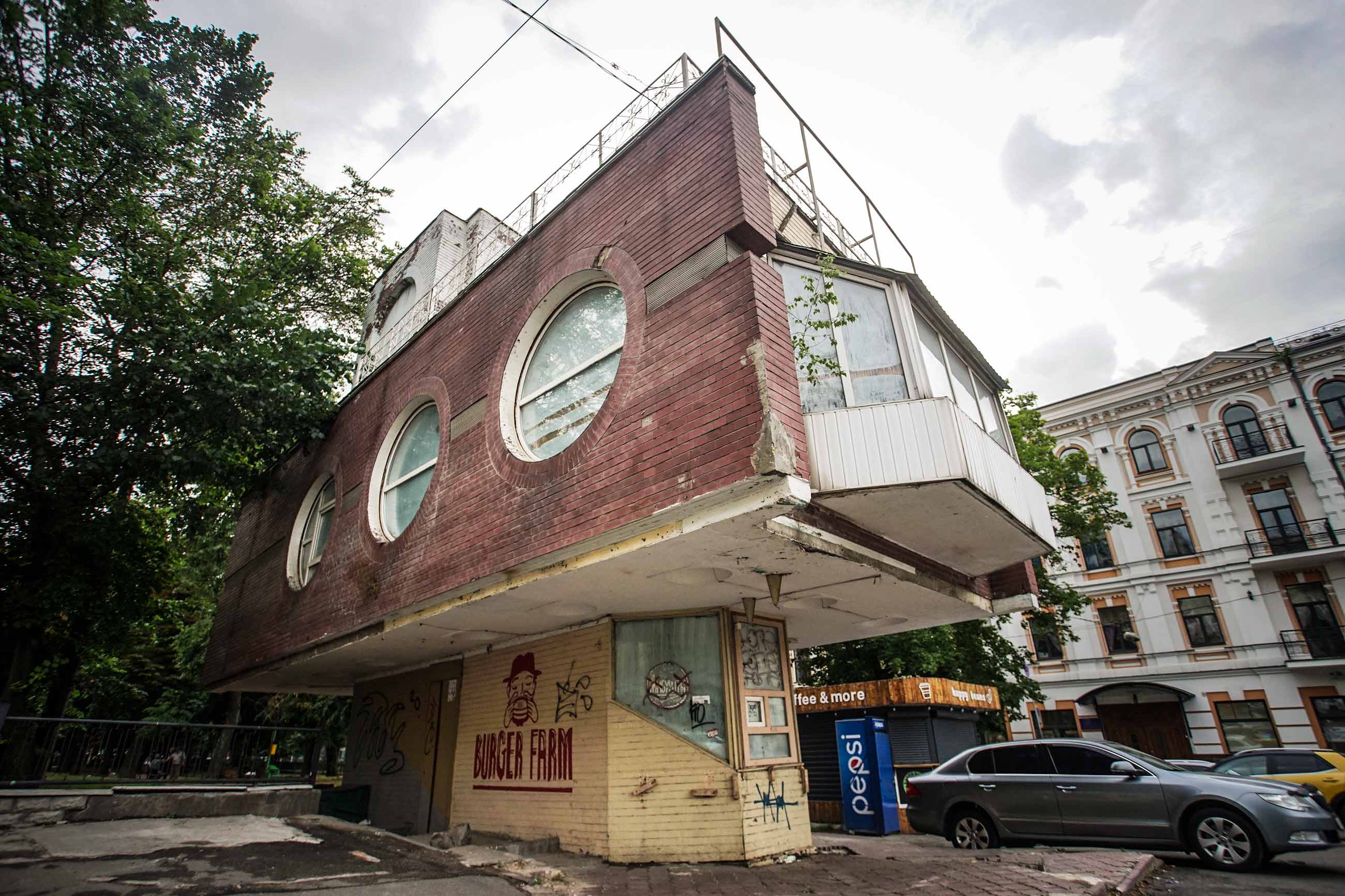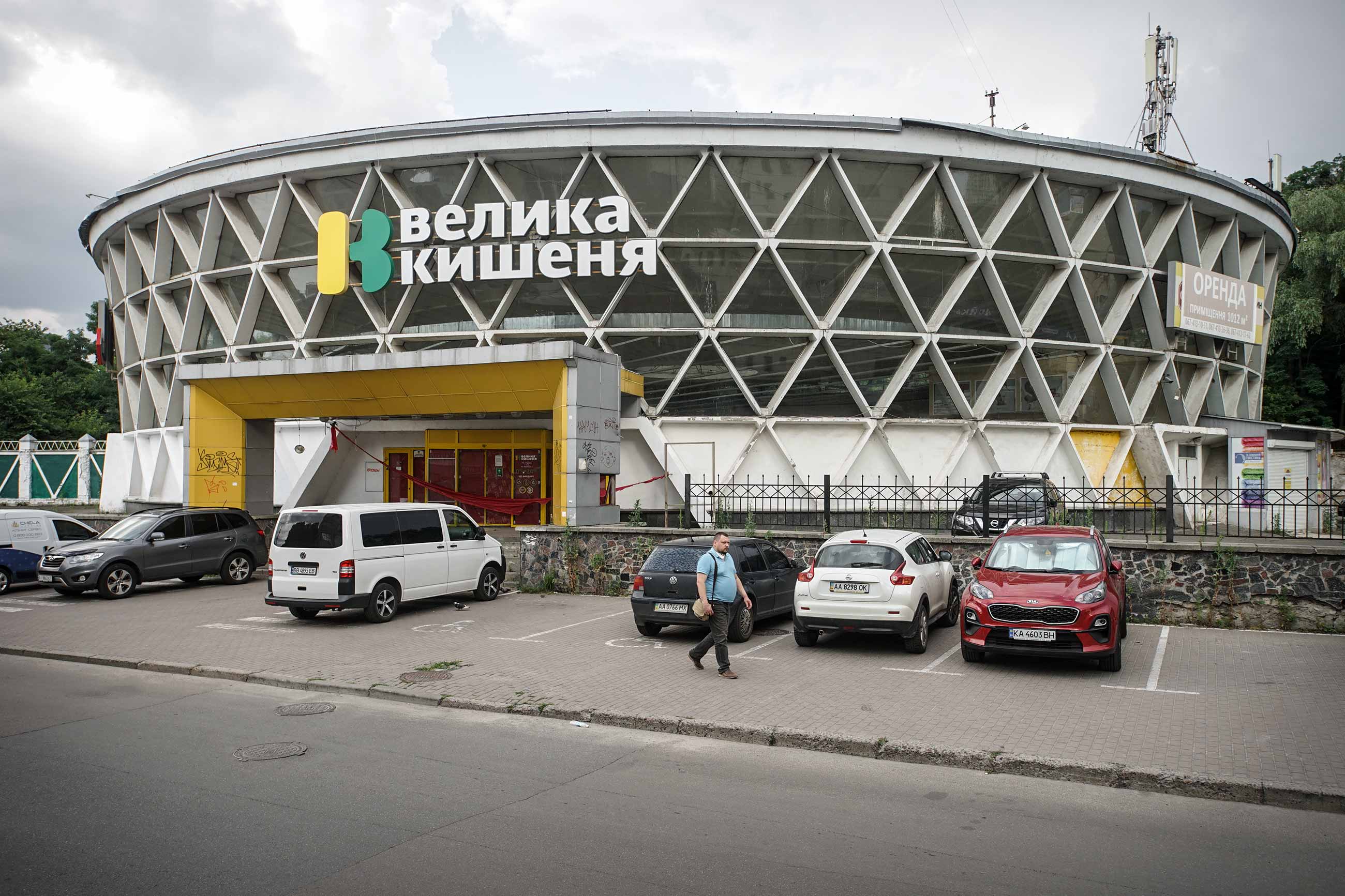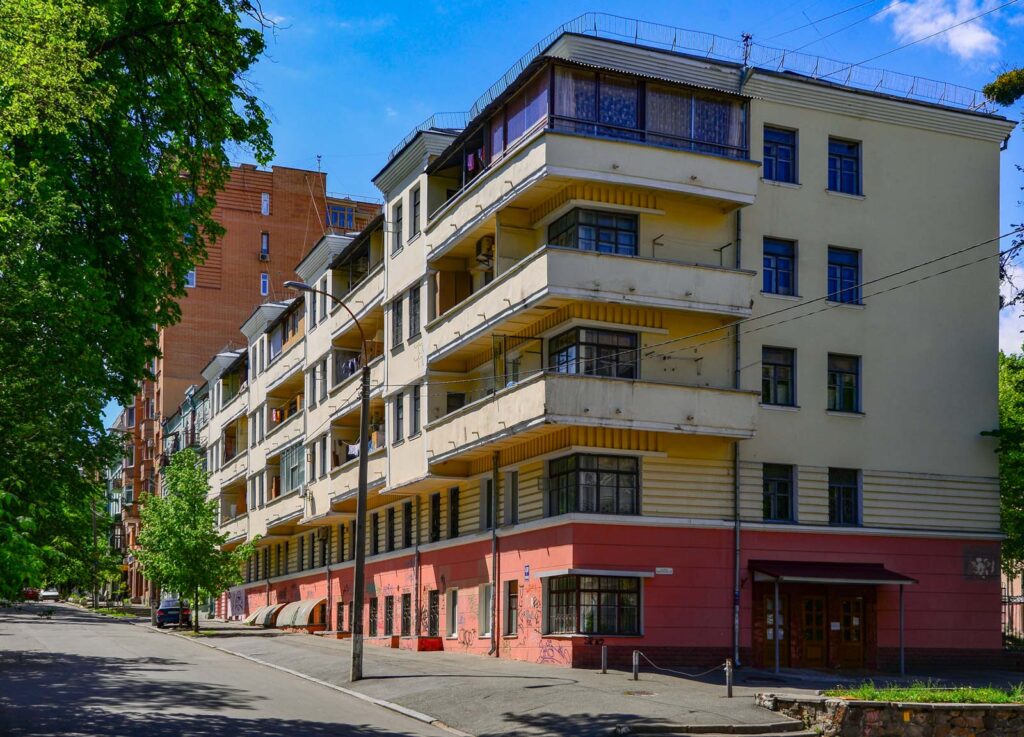Another historical building is in danger of demolition in Kyiv every week. These buildings usually do not have the appropriate status, so developers have a free hand to do whatever they wish. However, the status of “architectural monument” is not a panacea either: corrupt officials can help to remove this status, and then the building is brought to ruin and destroyed. In an exclusive article for Zaborona, Semen Shyrochyn, architectural researcher and advocate against illegal demolition, has compiled an “obituary” of Kyiv buildings that are already gone or that may soon leave us.
Building demolitions intensified in the 1970s and 1980s, when residential issues were not as urgent compared to the 1940s. The main demolitions were run-down one- and two-story buildings, including valuable examples of iconic buildings.
In the 2000s, demolitions of historical architecture increased. This is because the situation fundamentally changed: now the goal of construction is not to systematically ensure living space for city residents, but to earn revenue. Developers are willingly committing crimes against the history of the city for the sake of profit. And corrupt deputies and bureaucrats are coming to help them.
The destruction of Kyiv’s heritage took place under the previous mayors—Oleksandr Omelchenko and Leonid Chernovetskyi. But only during the mayorship of Vitaliy Klychko has the destruction of the city’s historical legacy been put on the assembly line. Developers want to build in the city center, but there are no free plots yet. And there are almost no one-story background buildings left: several two-story, as well as three- and four-story buildings, are fated for destruction. If they mainly demolished decrepit and lop-sided buildings in the 80s, then now they are deliberately bringing buildings to critical condition by dismantling the roof, removing the glazing from the windows, and digging tunnels under the foundation. Sometimes they refer to it as a “restoration,” for which they create fake housing cooperatives that do nothing but bring the house to a state of emergency. But sometimes none of that is needed: they can demolish the building intact and then retroactively state that it was in critical condition. The “architectural monument” status is not an obstacle either: a corrupt official can help to remove this status, and then the building is brought to ruin and destroyed.
Demolished buildings
December 2018. Mansion, 8B Nyzhnoiurkivska Street

Photo: Semen Shyrochyn
An early 20th Century two-story mansion, 8B Nyzhnoiurkivska Street was an example of an iconic building and the Kyiv “brick” style. Its modest decorations (cornices, lintels) were skillfully implemented by brick workers. The house was proportionate to the surrounding space and relief.
The mansion was demolished in December 2018 to build the seven-story clubhouse “Marseilles,” which was declared illegal. The developers ignored the building’s location in the historical landscape. In doing so, they not only destroyed the historical mansion, but also cut off a layer of archaeological soil.
January 2019. Estate, 17 Turhenievska Street

Photo: Semen Shyrochyn
In January 2019, a four-story apartment building, 17 Turhenievska Street, was destroyed. The building, constructed in 1900 (the year of construction was even depicted on the façade), was a vivid representative of early 20th Century Kyiv architecture, and its façade was richly decorated. In addition to its historical value, the house was an important component of the architectural identity of Turhenievska Street and formed a single, coordinated ensemble with neighboring house #19.
Instead of a house, the developer “Contact Invest” is planning construction on an eight-story apartment complex. The architecture and size of the building are not commensurate with the surrounding street and contrast remarkably with the local architecture.
March 2019. Nursery, 137 Antonovycha Street

Photo: Semen Shyrochyn
The former Oblpromstrahkassy nursery, built in 1936-1937, in the rear of the neighborhood between Antonovycha Street and Velyka Vasylkivska Street, was destroyed in March 2019. The house was an example of interwar architecture, and its façade was embellished with pilasters and belt courses.
The Montreal House apartment complex is now being built in its place.
April 2019. Pumping station, 137 Velyka Vasylkivska Street; substation, 141 Velyka Vasylkivska Street

Photo: Semen Shyrochyn
A complex of historical industrial buildings situated next to the trolley depot was preserved for a long time at the end of Velika Vasylkivska Street. After the depot was torn down and the “French Quarter 2” apartment complex built in its place, the demolition of the industrial buildings on the street’s red line also began.
The first to be destroyed was the four-story building #135, an example of 1950s non-residential architecture decorated with pilasters and rosettes, and it also had a decorative cornice and arched lintels in the windows of the top floor.
After that came the destruction of the 1908 Vasylkivska pumping station in April 2019: a representative of early 20th-Century industrial architecture with characteristic complex cornice patterns made with brickwork.
The final building in the complex to be destroyed was the Kyivpastrans substation, built in 1930-1931 in the Constructivist style. The structure was remarkably circular, with four vertical glass apertures.
The Magnett Business Center is being built on the site of the demolished complex.
May-June 2019. “Radar” factory buildings, 35 Predslavynska Street

Photo: Semen Shyrochyn
The “Radar” mechanical assembly factory on 35 Predslavynska Street, built in 1939-1940 by the famous architect Joseph Karakis, was demolished between May-June 2019. Because there was a good view of the factory from the street, its façade, despite the building’s industrial character, had a design worthy of a public space. It was dissected by a cornice supported on pillars that were decorated in the form of stepped pilasters with perspective brickwork profiling. The façade’s corner fragments were decorated with two pediments, along the axis of which there was a vertical accent in the form of a two-story niche accentuated by an arch on the third floor. It was one of Kyiv’s most interesting pre-war industrial buildings.
The Stanford apartment complex is now being built in its place.
August 2019. Mansion, 19 Klovskyi Descent

Photo: Semen Shyrochyn
One of two buildings from the tsarist era on Klovskyi Descent was destroyed in August 2019. The one-story building, according to various sources, was built between 1910 and 1913 and, judging by its structure, was a mansion. It was built in the Neoclassical style, and maiolica was used in its external design. It was one of the few surviving one-story mansions from imperial Kyiv.
The Philadelphia Concept House apartment complex is now being built in its place.
August 2019. Estate, 6A Kochubeivska Street

Construction on 6A Kochubeivska Street. Photo: Ivan Chernichkin / Zaborona
A one-story building on Kochubeivska Street was destroyed in August 2019. Adorned with brick half-columns, a cornice, and decorative inserts, it was a representative of the original bourgeois one-story Transbaikalia architecture of the late 19th Century.
September 2020. Loshevych mansion, 76 Saksahanskoho Street

Construction site on the site of the former Loshevych House. Photo: Ivan Chernichkin / Zaborona
76 Saksahanskoho Street, the two-story Loshevych House and the oldest building on the street, was destroyed in September 2020. The exact date of the building’s construction is unknown, but it had already appeared in photographs from 1870. Remnants of late classicism were notable in the building’s architecture. The windows were decorated with dotted frames, and there was a frieze with a geometric pattern and figures under the cornice.
The construction of a five-story house is being planned in its place, the architect of which is being borrowed from one of New York’s buildings.
December 2020. Bread factory, 3 Protasiv Yar

Photo: Semen Shyrochyn
Protasiv Yar 2, the administrative building of a military bread factory, was destroyed in December 2020. Built in 1885-1886, it was the last bread factory building to retain its original appearance. Additionally, it was the oldest building on the entirety of Protasiv Yar. The building was destroyed without the authorization of the Ministry of Culture, despite its location in a historical landscape.
Instead of a historical building, an eight-story office center designed by Yunakov Architects is being planned for the site.
January 2021. Olympic reserve pool, 20 Kurnatovskoho Street

Construction of a residential complex on the site of the Olympic reserve pool. Photo: “Kyivmiskbud”
One of the toughest losses of Kyiv’s modernist legacy was the Olympic reserve pool on Kurnatovskoho Street, demolished in 2021. The structure was built in the early 1980s and had an original composition with interesting architectural techniques. It was also functionally unique: it was one of only two 25-meter pools in the USSR for deep-diver training, particularly for underwater welding. There were also elements of monumental art in the interior.
“Kyivmiskbud” will build a 25-story multicolored building on the site of the pool.
April 2021. Utkin house, 29 Petliura Street

Photo: Semen Shyrochyn
One of the most high-profile demolitions was that of the Utkin house at 29 Petlyury Street in April 2021. The former revenue house of the merchant Ivan Utkin was built at the turn of the 20th Century in the Neo-Renaissance style, and was the only imperial-era building in the neighborhood. The building had no signs of structural failure and was destroyed during the spring lockdown to minimize the chances of activists impeding demolition. The developer had no authorization for demolition, and the documents only allowed for maintaining the building.
Despite the outcry, the developer was not penalized. A 26-story hotel is being planned on the site of the historic building.
April 2021. Schulz Brewery, 8 Holosiivskyi Prospekt

Photo: Semen Shyrochyn
The illegal and uncoordinated demolition of one of the buildings of the Karl Schulz brewery at 8 Holosiivskyi Prospekt began in April 2021. The original residential building was erected in 1881 in the Neo-Renaissance style and had a symmetrical plan for the façade. An authentic parapet with a metal fence was preserved above the cornice.
The building largely preserved its authenticity in its volumetric-spatial arrangement and decorative design. It was a valuable representative of Demiyivka historical architecture and residential architecture of the imperial era.
The demolition of the building, famously, did not go through, although nobody is planning on saving it. The building, like the brewery itself, is already viewed as a corpse, on the site of which the construction of either an office center or a mosque is being planned.
June 2021. Wing of the Barban Estate, 6 Observatorna Street.

Construction work around the Barban Estate. Photo: Ivan Chernichkin / Zaborona
Preparations for the demolition of the Barban Estate at 6 Observatorna Street have been underway since early 2021. The one-story mansion built at the end of the 19th Century was the only evidence of the era on the entire street and in the neighborhood. The building has been linked to famous names: it was here that the playwright Oleksandr Korniychuk and the writer Wanda Wasilewska lived. They hosted American author John Steinbeck at this house. Despite its historical significance, the mansion does not have a protected status. The developer, without permission to work in this historical area, destroyed the planting and a wing of the estate in June 2021. It seems that that will be the fate of the entire mansion, on the site of which a 119-apartment, 12-story residential complex is being planned.
June 2021. Dormitory, 36 Olehivska Street

Photo: Semen Shyrochyn
The demolition of this three-story dormitory on Olehivska street began in June 2021. This building was constructed in the early 1950s under the design of architect Anatoliy Zhukov and is one of the notable examples of the architecture of its time. It contains monumental decorative elements, and the silhouette of the building alludes to historical architecture. The dormitory is the dominant historical building on Shchekavytsa Hill, proportionate to the surrounding environment with enormous compositional meaning in the landscape.
In late June 2021, despite the lack of both authorization for working on the historical site and a critical condition warning, demolition started from the back of the building. It is already condemned, and they are planning the construction of a 157-apartment complex in its place, which will inevitably crush the topography of the hill.
Buildings that we might lose soon
Aside from the buildings that have been destroyed or those brought to critical condition, after which point nobody would think of preserving them, there is also a whole host of buildings that are either condemned for demolition or have the relevant permission, but that we can still try to save.
Stanislavska House (“the house with flies”), 93 Volodymyrska Street

Photo: Semen Shyrochyn
The developer took a particularly circuitous route to try to demolish the house at 93 Volodymyrska Street, known as either “the house with flies” or “the house with beetles.” Work on the adjacent site caused cracks to emerge inside the house, and a large section of the rooms were acquired by front men who formed a fake housing cooperative: they announced the “renovation” of the house to preserve especially valuable modern interiors with images of insects and plants. Yet instead of a renovation, the cooperative drove the house to critical condition, tore down the roof, removed windowpanes, and took out highly valuable décor to prevent the house from being included as an architectural monument. The matter began in April 2021 and continues today.
The Kseniya Smyrnova House, 7 Mykilskyi Lane

Photo: Semen Shyrochyn
After several years of rumors, demolition of the house at 7 Mykilsky Lane began on June 30, 2021. The last remaining house of the imperial era on the street, it was built in 1913 by the notable architect Kraus and belonged to Ksenia Smyrnova. The house had a protected status, but it was removed to please the developer. The demolition was accompanied by police cordoning off the neighborhood. After removing the roof, demolition was temporarily halted, however, based on the seriousness of the developer’s intentions, the house has been condemned.
19th Century Estate, 4 Hrushevskyi Street

Photo: Semen Shyrochyn
A 19th Century estate at the end of Hrushevskyi Street has been in the crosshairs of developers since as 2004, when House #5 on Khreshchatyk Street, the last of the houses built on the pre-war red line, was demolished. Since then, one developer has repeatedly sought a plot transfer. The building, which has the “architectural monument” status, was abandoned and has been brought to a critical condition over the years. In June 2021, the Kyiv City Council approved the plot transfer to the developer.
Former orphanage, 6 Alla Horska Street

Photo: Semen Shyrochyn
The 1937 two-story former orphanage, built according to architect Opanas Slastion’s design, was an example of post-Constructivism and a testament to the mass construction of school and preschool buildings in the second half of the 1930s. The building was part of a historical development project commensurate with the surrounding area. In 2021, the Kyiv City Council voted to transfer the plot to a new builder, the project of which is still unknown. Initially they were talking about a new apartment complex, and then there were talks of a medical facility. In fact, the existing building has been used as a medical facility in the past.
Osip Rodin Estate, 71 Olesia Honchara Street

Photo: Ivan Chernichkin / Zaborona
The Osip Rodin House at 71 Honchara Street was built in 1882 as the project of Volodymyr Nikolayev. The building, a slice of history, has attracted the attention of developers. After several unsuccessful attempts to grant the building protected status, “Renovation Map” activists managed to include the building in the list of architectural monuments; however, this action was rescinded by the District Administrative Court of Kyiv (read more about the corrupt dealings of the court and its head judge here – ed.). The lawsuit on the house continues, but in the meantime, construction is underway on the Franklin Concept House apartment complex.
Estate, 2 Khoryva Street

Photo: Semen Shyrochyn
The 19th Century building complex at 2 Khoryva Street contains two residential buildings and one wing. The estate is an example of the characteristic Podol architecture of the time. The complex received the status of architectural monument in 2014, which, however, prevented the developer from demolishing the building to construct a new commercial project. The District Administrative Court of Kyiv has traditionally stood on the side of developers and has removed the estate’s protected status twice, in 2015 and 2019. Despite the court’s ruling, the Ministry of Culture has not removed the house’s protected status: court hearings continue, but the building is collapsing in the meantime.
“Meridian” House of Culture, 15 Mykoly Vasylenko Street

Photo: Semen Shyrochyn
One of the most egregious instances of a barbarous attitude toward the modernist legacy occurred in Kyiv in 2020, when Roshen bought the Korolev House of Culture “Meridian” with the promise to build a new concert hall, the project of which was not even discussed. The building, designed by the famous architect Valentyn Ezhov and built in 1984, was not only a notable representative of modernism, but also one of two Kyiv buildings with a façade lined with Armenian tuff. Despite that, the cultural significance of the building was not considered at all—the House of Culture was bought specifically for demolition.
Dispatch building, 25 Bulvarno-Kudriavska Street

Photo: Ivan Chernichkin / Zaborona
Rumors about the planned demolition of the modernist dispatch building at 25 Bulvarno-Kudriavska Street emerged in July 2021. The three-story building with characteristic circular windows was built by the honored architect Yanush Wig in the 1980s and is a notable example of style. It contained a café for a long time, but the building was later purchased. Nobody knows what they are planning to build in its place. The developer has already attempted to enclose the building with a fence.
Alla Anyshchenko Market, 1 Kudryashova Street

Photo: Ivan Chernichkin / Zaborona
In May 2021, plans were revealed about the building transfer of the marketplace on Kudryashova Street. It is the project of distinguished architect Alla Anyshchenko and a precious example of modernist architecture with a valuable design feature: a sagging roof. Societies of Polish and Ukrainian architects have come out in defense of the building; however, the issue has repeatedly come up for a vote in the Kyiv City Council.
Dormitories, 11 Observatorna Street and 3 Volodymyr Vynnychenko Street

Photo: Semen Shyrochyn
In spring 2021, plans were revealed about the transfer of the buildings on 11/1 Observatorna Street and 3 Volodymyr Vynnychenko Street. The dormitories are a valuable and well-preserved example of post-Constructivism and were built according to the project of preeminent architect Volodymyr Zabolotnyi in the mid-1930s. A new construction project is being planned in its place, but the issue has not yet been voted on at the Kyiv City Council.
Zaborona has a detailed guide on what to do if historical buildings are being demolished in your city. Have a look at it: who knows, you might help save the image of your city. Translated by Arthur Mengozzi from Respond Crisis Translation


